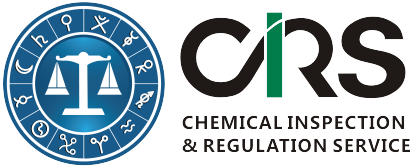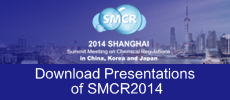Food Contact Material Regulation in China
original article from CIRS
China Food Contact Material (FCM) is defined as the material that is expected to contact with foodstuff, for instance, food packing materials (paper, plastic) and materials which may contact with food directly or indirectly (coatings, inks and adhesives) . When FCMs contact with the food, the molecules in food contact materials can migrate to the food. This migration should be limited to ensure food safety.
Regulatory Framework in China
In China, food contact materials and products are regulated by Food Safety Law of the People’s Republic of China which has taken into effect since June 1st, 2009. According to the Article 62 & 63 of Food Safety Law of the People’s Republic of China, foods, food additives and food relevant materials/products which intend to import into China must comply with this regulation. If the food relevant materials/products are not listed in the positive list, notifications of the new product is necessary.
At present, more than 130 National Standards & 125 Industry Standards for food contact materials and products are effective. They regulate food contact materials and products from three aspects: raw materials, final products and additives. Raw materials include paper, plastic, rubber, ink, adhesive and coating. Additives usually are added into raw materials to improve performance and quality of products. Final product could be tableware, package, food container and so forth.
Some National Standards of food contact materials and products in China are listed in Table 1.
Table 1: Some Standards for Food Contact Materials and Products
Item |
National Standards (GB) |
Raw material |
GB 9684- 2011 Food Safety Standard for stainless steel products |
Final Product |
GB 9688- 1988 Food Safety Standard for polypropylene food packaging |
Additive |
GB 9685-2008 Hygienic Standards for Use of Food Additives in Food Containers and Packaging Materials |
Food contact additives
On Jan 20th 2015, National Health and Family Planning Commission of the People’s Republic of China (NHFPC) published Draft Hygienic Standard for Use of food additives in Food Contact Materials and Products for public comment which had added food contact materials regulation part of 2012 MOH Notice No.5, No.11, 2013 NHFPC Notice No.1, No.14 and 2014 NHFPC Notice No.14 on the base of GB 9685-2008. If the draft takes effect formally, GB9685-2015 will be the only national standard for food additives in food contact material and products.
Comparing with GB9658-2008, there are several modifications that should be highlighted:
- Change the term “food containers and packaging material” to “food contact materials and products”.
- Because food additive is not the only factor to determine whether product achieves the food contact material safety standard, the part of testing result identification in GB 9685-2008 has been deleted. Nevertheless, this part will be regulated in other general standards.
- Types of food additives in food contact materials and products that have been listed in appendix A expand from 958 to 1316.
- Adjust the application scope and usage amount limitation of phthalates additives in food contact materials and products. Meanwhile, delete four phthalates additives, as shown in Table 2.
Table 2 Deleted Phthalates Additives
Chinese Name |
English Name |
CAS No. |
邻苯二甲酸二甲酯(DMP) |
131-11-3 |
|
邻苯二甲酸二异丁酯(DIBP) |
84-69-5 |
|
邻苯二甲酸二异辛酯(DIOP) |
27554-26-3 |
|
邻苯二羧酸-二-C9-11 支链烷基酯(C10 富集) (DIDP) |
Diisodecyl phthalate |
68515-49-1 |
- Abolish the application range limitation of borax, Kaolin calcined, isopropanol, Sodium hydrogen carbonate, Sodium carbonate and Acetic acid glacial. Because they do not belong to food additives and the majority of above chemicals migrate as the form of salts which should be regulated by metal salts migration limit rather than additives specific migration limit (SML).
- Delete the food additive N-Vinyl-2-pyrrolidone (NVP, CAS 88-12-0) that was used in food contact ink.
- The hydrates of food additives listed in appendix. A can be used in food contact materials as well.
- Revise the application scopes and maximum usage amounts of 63 food contact additives, such as 1, 6-hexylenediamine (CAS 124-09-4) and phenol (CAS 108-95-2).
- Add a new term- “total specific migration limit (SML (T))”. Its Definition is that the maximum permitted amount of two or more chemicals that migrate from food contact materials or products to contacted foods or food stimulants. Add appendix B “Requirements of Total Specific Migration Limit”. It means that GB9685- 2015 emphasizes and focuses on the total specific migration amount of additive compositions in food contact materials and products.
- If the food contact materials and products, which conform to the draft standard (GB9685- 2015), contain following metallic elements, they must achieve the special metal requirements as well. Total metallic elements specific migration amount must be lower than SML, as shown in Table 3
Table 3: Specific Limitation for Metallic Element
Metallic Element |
SML ( mg/ kg ) |
Barium (Ba) |
1 |
Cobalt (Co) |
0.05 |
Copper (Cu) |
5 |
Iron (Fe) |
48 |
Lithium (Li) |
0.6 |
Manganese (Mn) |
0.6 |
Zinc (Zn) |
25 |
- Restrict or forbid 6 additives when they are used in baby food contact materials. For example, Bisphenol A (CAS 80-05-7) is forbidden for baby food contact material.
This draft standard use the experience of food contact material regulation in Europe and America, which help GB9685- 2015 makes more sense. The advantages of GB9685- 2015 are concluded as following:
- Enhance the reasonability and validity of application area and usage amount of food contact additives.
- Gear additive of food contact material and product to international standards, so that import food contact materials will be more easily.
- Search the information of additives of food contact materials more conveniently.
Contact Us
- CIRS China
Hangzhou CIRS Co. Ltd (CIRS China)
11F Building 1, Dongguan Hi-Tech Park, 288 Qiuyi Road, Binjiang District, Hangzhou 310052, China
Tel: +86-571 8720 6574 | Fax: +86-571 8720 6533
Email: service@cirs-reach.com

